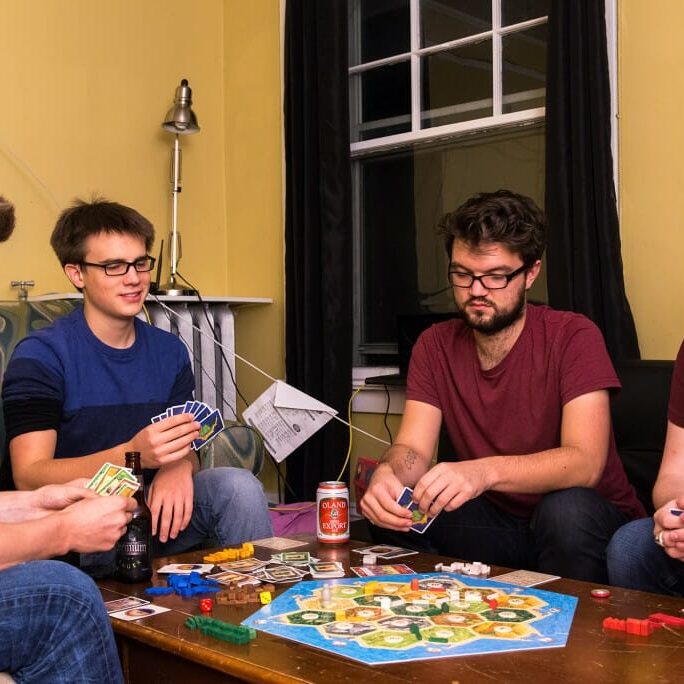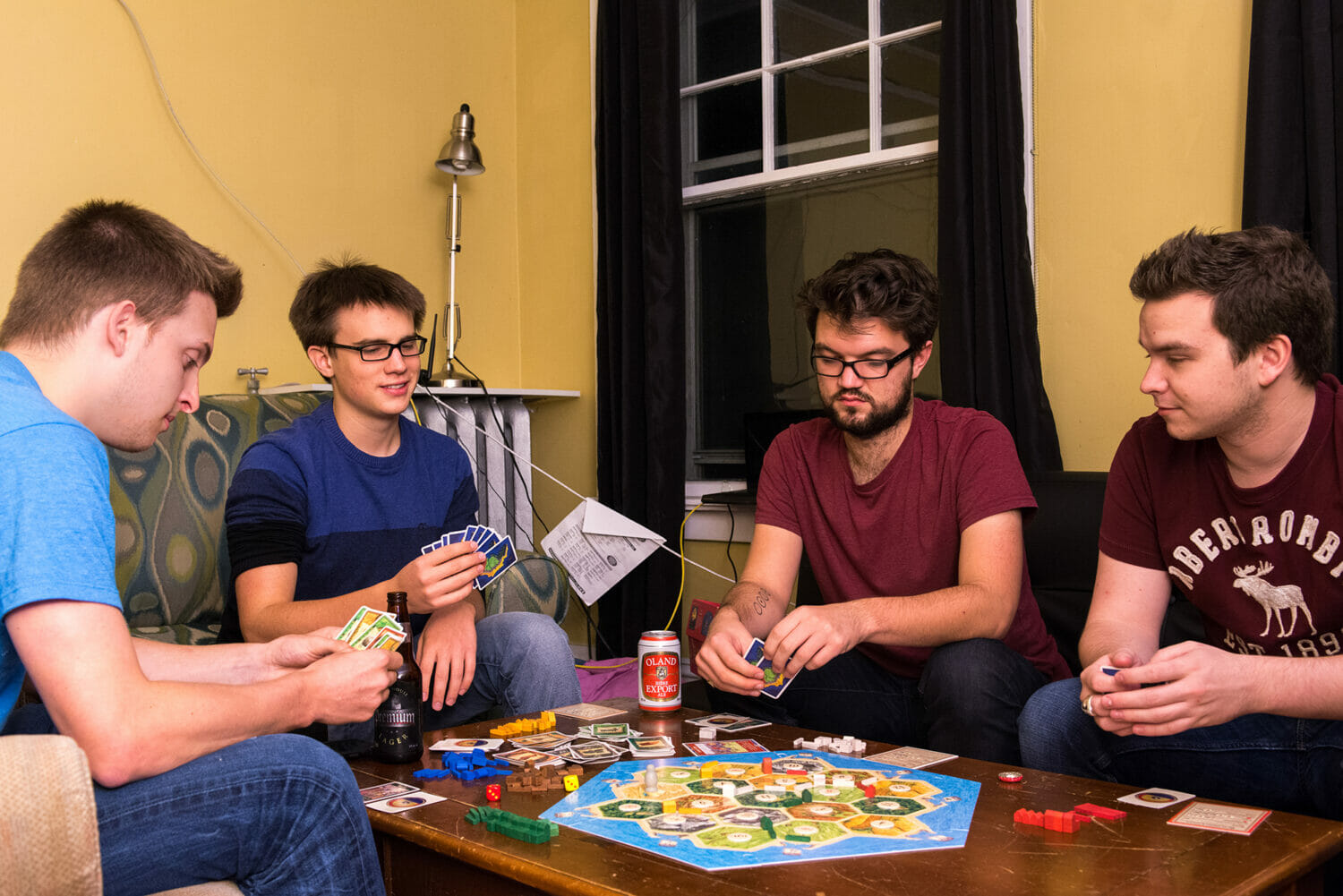
Board with life?
In a society where cellphones seem to isolate individuals more than connect them, board games are making a comeback.

Board games, unlike cell phones, offer a tangible means of interaction with others. (Photo by Amin Helal)
In a society where cellphones seem to isolate individuals more than connect them, board games are making a comeback.
“Anyone have wood they could sell me for wheat?”
“No, but I have brick.”
“I have enough brick, but if you add an ore we could have a deal.”
“Done.”
Such back and forth is a familiar feature of Settlers of Catan, a board game that has become wildly popular in the last few years.
So what makes board games like Catan so attractive to a society that is now so tech-oriented? I believe that it is the tactile, interactive, and, of course, social experience that many are missing today. But most importantly, board games are great fun, and designers from Europe are approaching fun from a fresh angle. Games like Catan, Caracassonne, Puerto Rico and Agricola turn the confrontational and luck-based games such as Battleship and Monopoly on their heads. They incorporate creative, constructive and randomized gameplay mechanics that are simply enjoyable.
Granting all this, video games may appear to eclipse board games as the go-to source for multiplayer fun; however, one must remember that video game studios use board games as inspiration and lessons for designing good games. Sitting with your friends or family around a good ol’ board game and interacting is something that cannot be reproduced in a video game.
Board games are everywhere now. Take Snakes and Lattes for example, a board game café located in Toronto; on some busy days, eager visitors must join a waiting list to play. Many consider the café to be a rite of passage for anyone visiting Toronto. The Internet has exploded with communities entirely dedicated to board games. Shut up and Sit Down is amassing tons of readers, and Reddit’s subreddit on board games, r/boardgames, has nearly 50,000 subscribers.
But let’s not forget that classic board games such as chess, which some players even consider to be a sport, still have a strong competitive and recreational following. Although chess will probably never garner the same attention as it did in the ‘70s and ‘80s when grandmasters such as Spassky, Fischer, Kasparov, and Karpov duked it out on the eight-by-eight square, chess is a game that has stood the test of time. Another game worth mentioning is Go—it is the only board game where the computer AI is still far away from beating the best players, which alludes to the sheer level of complexity of the game. Yet, despite the depth of strategy, Go has fairly simple rules and is very enjoyable.
Having been a competitive chess player for four years, and a great lover of all sorts of board games, I am glad to see the current generation return to the old fashioned dice-rolling, card-flipping, piece-moving, and hand-shaking fun that is board games.






